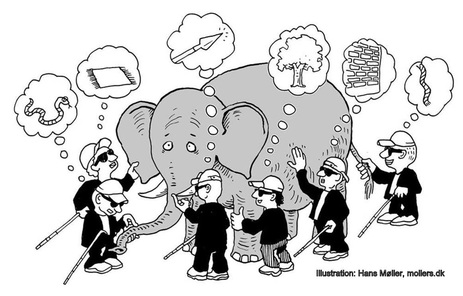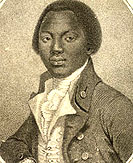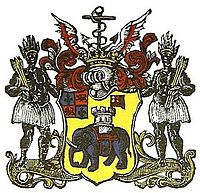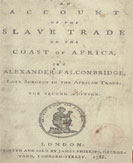Historical Empathy is Awesome
Before we start this next section it is important to understand the value of exploring concepts and ideas from a multitude of perspectives. Examining multiple sources, information, and justifications pushes us to a deeper understanding of events or ideas. Look to the image on the right; as you can see there are six blind men all touching an elephant. All of them are touching the same elephant but each is unaware of what it is they are touching, which we can see from their thought bubbles. The idea is that each one of them feels a part of the elephant, but only one part, and then describes it. Each person is in disagreement and are unaware that they are touching an elephant. So by stopping and then collaborating, each individual will be able to see the elephant, or the bigger picture (i.e. the truth).
So when it comes to slavery examining just one perspective will never give us the complete and clear picture of what life was like during the transatlantic slave trade and how individuals and groups justified their actions. Just like the blind men don't have the benefit of seeing the elephant and therefore need to work together to understand the truth (it is an elephant), we, as historians, do not always have the benefit of having been there in history. We must explore primary and secondary sources and the multiple perspectives of people, places, and ideas to evaluate and validate the information we encounter. Click the link below for the worksheet to accompany your reading of the extracts and discussion
|
Activity 5: Historical Empathy
This activity requires you to read and discuss the accounts of slavery, that can be found below. In pairs read and discuss one of the following accounts of slavery, by clicking on the links below:
You will be comparing and contrasting the views expressed in your chosen text with those of the other groups. This requires you to interpret the assigned perspective in the text and then explain and explore the conditions of slavery from this point of view before then comparing the three perspectives. What to do:
Some inquiry questions to consider before, during and after the discussion:
|
|
Questions to help get you started
|
Questions to help get you started
|
Questions to help get you started
|
Recap of the Transatlantic slave trade
Defining Slavery
|
To define slavery and a few things need to be considered first. The practice of slavery has differed throughout history, from one society to the next. Slaves also experienced different work regimes, so variables such as the attitudes of their masters, type of work they were performing, and where they lived had significant impacts upon the treatment of slaves. But this doesn't mean we cannot define slavery.
It is still possible to agree on a definition for slavery; as slavery is considered one form of exploitation, varied in its conditions, that treats people as property. Make sure you read the quote to the right. Then, before responding to the 'what would you say...', watch the video below 'Youth for Human Rights'. If you need to, consult the Youth for Human Rights webpage, or another site, for further assistance in constructing your answer. |
While it may have been over 200 years since the slave trade was abolished what would you say if I told you that there are at least 12 million men, women, and children in slavery today... |




